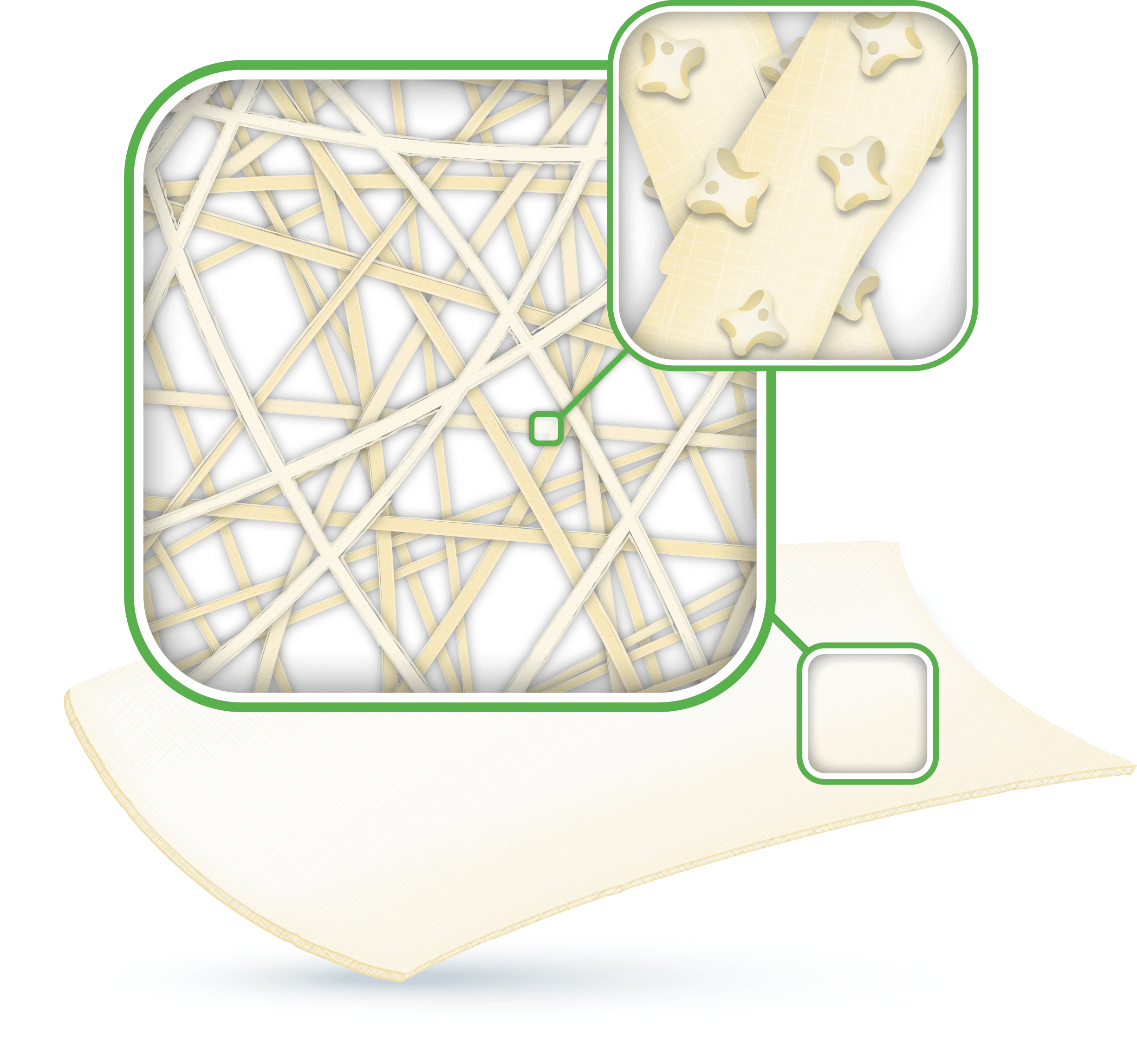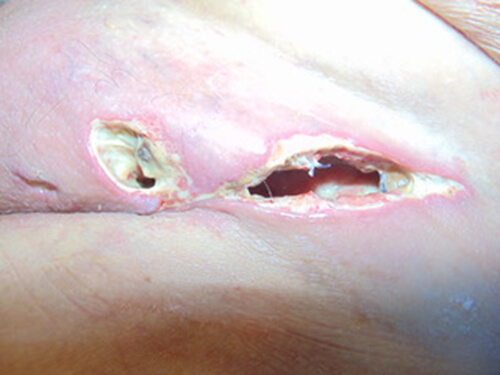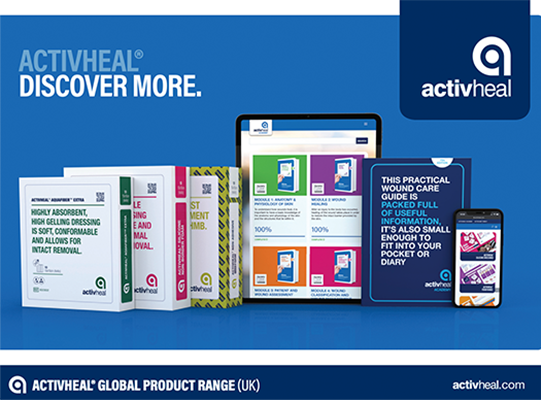Clinical Resource: The management of a surgical incision and drainage of abscess using ActivHeal® AquaFiber Ag
Joanne Gaffing, Matron – Infection Prevention & Tissue Viability
Morecambe Bay NHS Foundation Trust
Clinical Resource
The management of a surgical incision and drainage of abscess using ActivHeal® AquaFiber Ag
Joanne Gaffing, Matron – Infection Prevention & Tissue Viability
Morecambe Bay NHS Foundation Trust
BACKGROUND
Topical antimicrobial silver has been used for hundreds of years in wound care. Topical antiseptics, such as silver, differ from antibiotics as they have multiple sites of antimicrobial action on target cells and therefore a low risk of bacterial resistance (Wounds International, 2012).
Advanced Medical Solutions has a new antimicrobial fibre dressing in the ActivHeal® range as ActivHeal® Aquafiber Ag, which includes both a flat and ribbon format to address the clinical needs of patients. The dressing releases silver ions in the presence of wound exudate and is effective antimicrobial agent against a broad spectrum of microorganisms frequently associated with bacterial colonisation and infection of wounds, for up to 7 days. The case study will explore the management of the abscess wound using ActivHeal® Aquafiber Ag.
METHOD

RESULTS

Wound at initial assessment
Initial assessment the wound measured 11.2cm in length, 2.2cm wide and 10.4cm deep and was covered with 5% necrotic tissue, 45% slough and 50% granulating tissue. The wound showed clinical signs of infection of erythema, heat, oedema, increased levels of exudate and abnormal discharge. ActivHeal® Aquafiber Ag ribbon was applied as part of the treatment regime to reduce wound bioburden and manage exudate. The dressing was loosely packed within the wound and covered with a secondary dressing. The patient was also prescribed antibiotics. The dressing was changed daily due to the high levels of exudate. The ActivHeal® Aquafiber Ag was selected to assist in reducing the risk of wound bioburden, absorb levels of exudate, maintain a moist wound environment, and promote healing.

Wound at day 2
Significant progress was then noted in the wound, with the wound showing wound progression and a reduction in the clinical signs and symptoms of infection. All necrotic tissue had been removed and there were signs of new granulating tissue (60%) and 40% sloughy tissue. The wound size remained the same. The wound still showed signs and symptoms of infection, of erythema, heat, oedema and abnormal discharge, but they had reduced along with the levels of exudate indicating that the bacterial bioburden was reducing. Exudate levels were high however the peri wound skin was not macerated but remained inflamed. ActivHeal® Aquafiber Ag ribbon was reapplied along with an absorbent foam secondary dressing.

Wound at day 6
Significant progress was then noted in the wound, with the wound showing wound progression and a reduction in the clinical signs and symptoms of infection. All necrotic tissue had been removed and there were signs of new granulating tissue (60%) and 40% sloughy tissue. The wound size remained the same. The wound still showed signs and symptoms of infection, of erythema, heat, oedema and abnormal discharge, but they had reduced along with the levels of exudate indicating that the bacterial bioburden was reducing. Exudate levels were high however the peri wound skin was not macerated but remained inflamed. ActivHeal® Aquafiber Ag ribbon was reapplied along with an absorbent foam secondary dressing.

Wound at day 9
The wound measured 11.2 cm long, 2.2cm wide and 9.9 cm deep. The wound had progressed to 10% slough and 90% granulating tissue. The wound still showed some signs of infection. Exudate levels had reduced and no signs of maceration. ActivHeal® Aquafiber Ag dressing had assisted in reducing bacterial bioburden and levels of exudate and assisted in the autolytic debridement of devitalised tissue. The dressing was discontinued and NWTP was applied.
CONCLUSION
References
Guest, J. Ayoub, N. McIlwraith, T. et al (2017) Health economic burden that different wound types impose on the UK’s National Health Service. International Wound Journal. 14 (2): 322-30. https://doi.org/10.1111/iwj.12603.
Newton, H. (2010) Reducing MRSA bacteraemias associated with wounds. Wounds UK 6 (1): 56-65.
Swanson, T. Grothier, L. Schultz, G. (2014) Wound Infection made easy. Wounds International. Available from: www.woundsinternational.com
Wounds International (2012) International consensus. Appropriate use of silver dressings in wounds. An expert working group consensus. London. Wounds International, 2012. Available to download from www.woundsinternational.com
CONTACT US FOR MORE INFORMATION
Discover ActivHeal®
Social Media
Our Product Range
AMS Group
ActivHeal®, its logo and the Advanced Medical Solutions logos are registered trademarks of Advanced Medical Solutions Ltd.
Copyright © Advanced Medical Solutions Limited | Design by Lumisi Ltd


